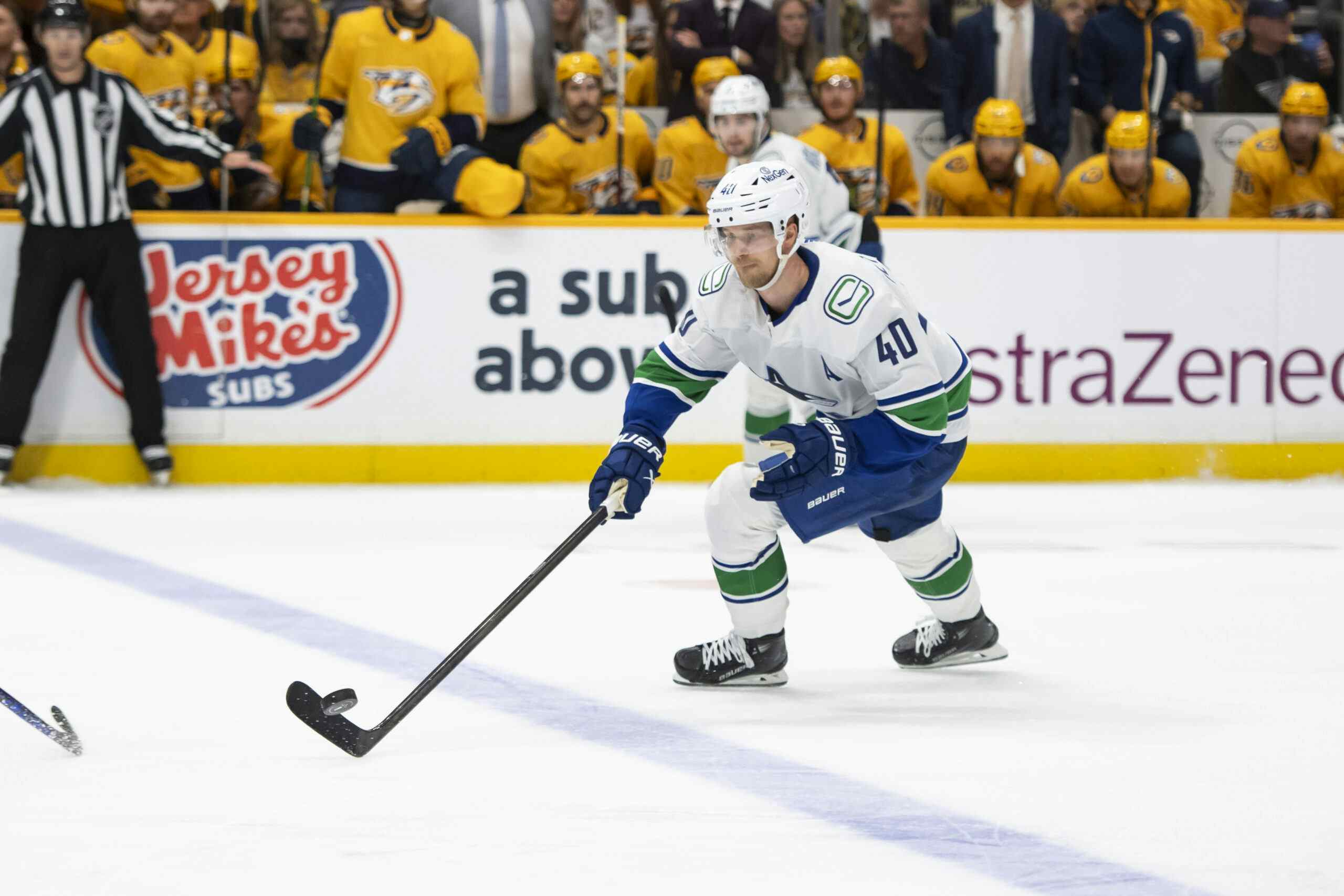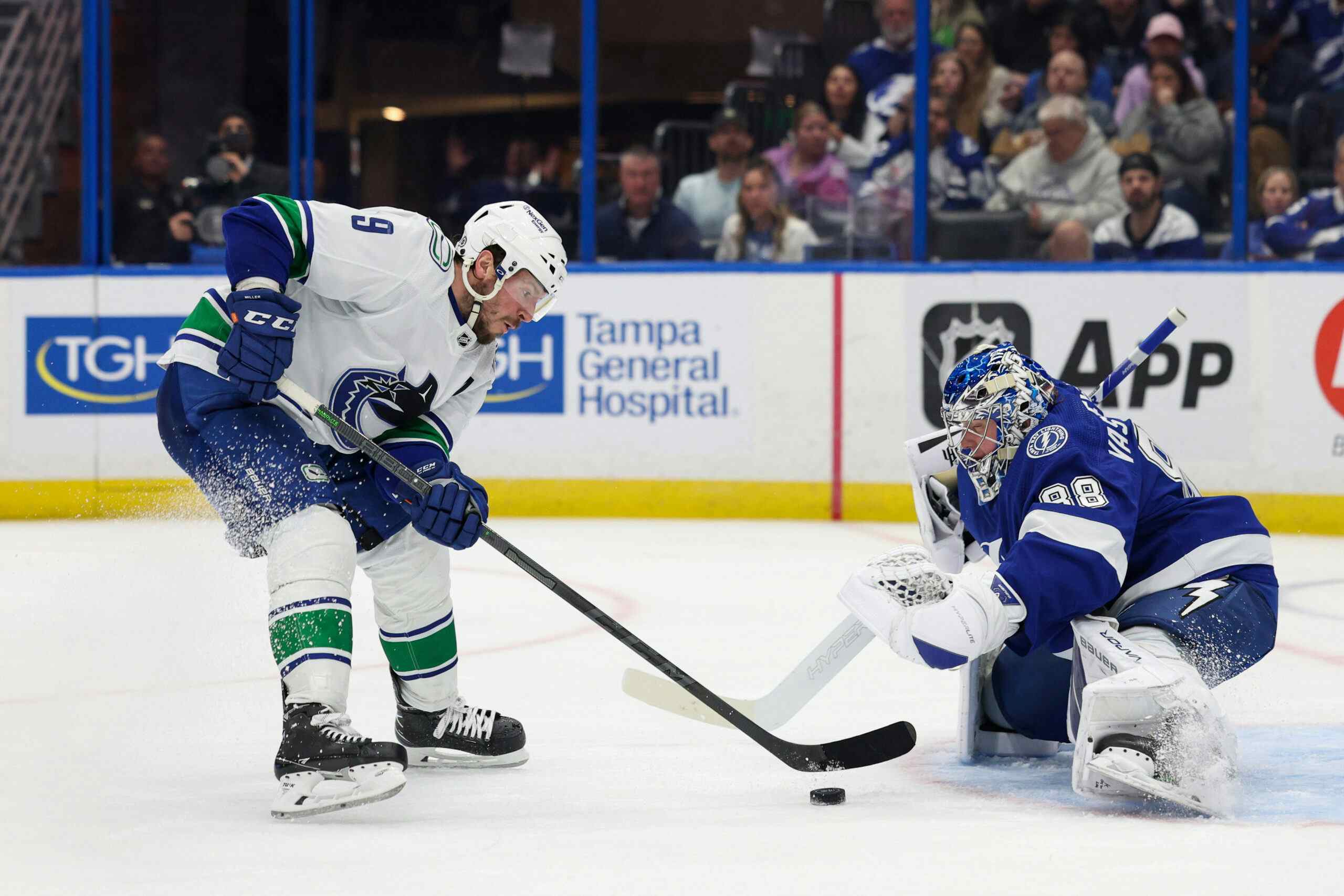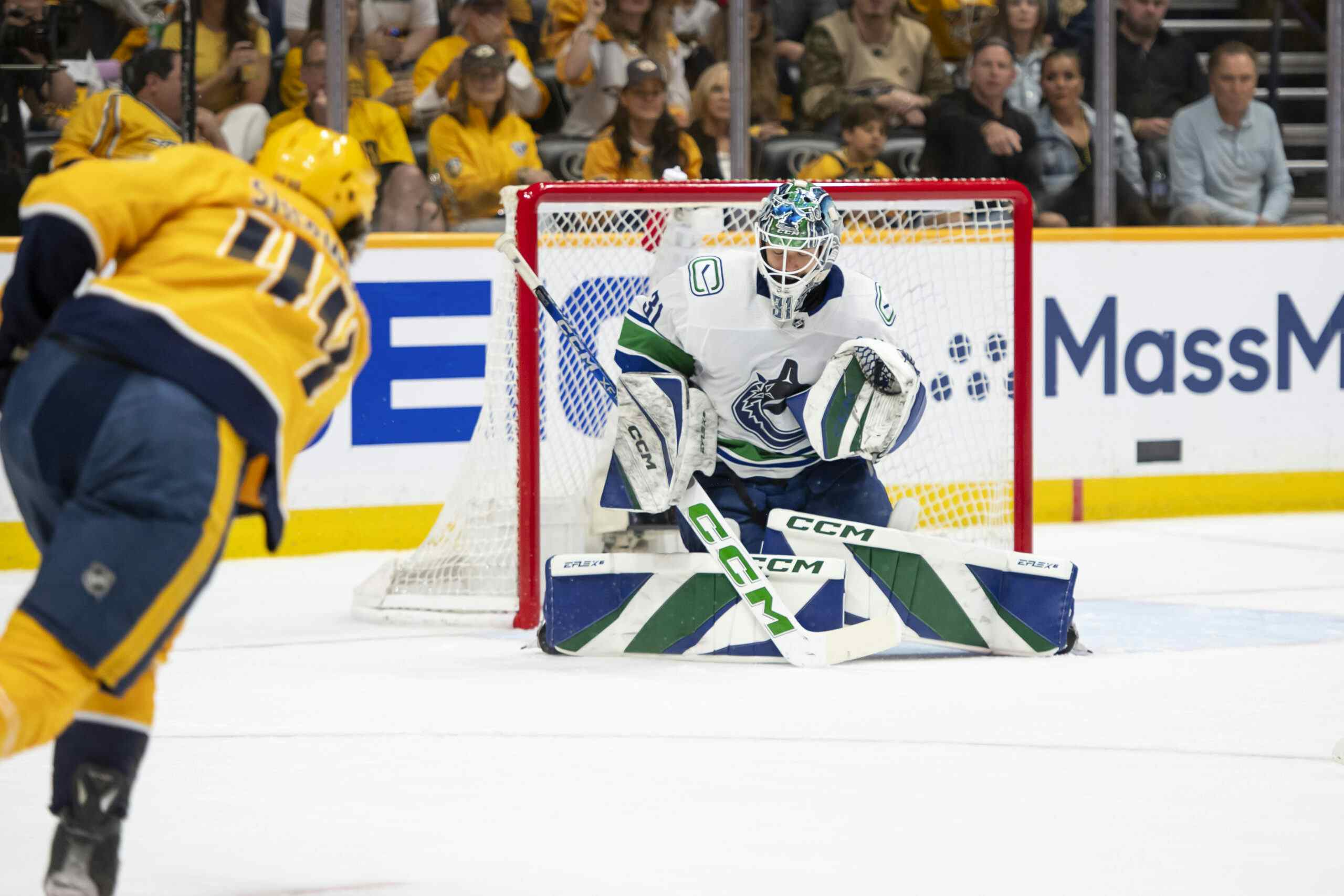Navigating The Salary Cap – Part 1

4 years ago
Jim Benning has been criticized for his contract signings since 2015. That year, he re-upped Luca Sbisa and Derek Dorsett in the spring and then followed those up that summer by locking up recently acquired centre Brandon Sutter to a five-year deal with a $4.375 million cap hit.
The criticisms of other signings have been less warranted and there are several contracts that have turned out well. Until now the Canucks have had no salary cap issues under Benning’s watch. The purpose of this article isn’t to debate the merits of Benning’s deals, but instead to look at the Canucks current salary cap situation and what options they have to get under the cap at the start of the season while still getting Brock Boeser and Nikolay Goldobin signed.
The current situation
Since last off-season Benning has brought in Jay Beagle, Antoine Rousell, Tim Schaller, Josh Leivo, Tanner Pearson, JT Miller, Micheal Ferland, Tyler Myers, Jordie Benn, and Oscar Fantenberg for a combined cap hit of $30.75 million according to the highly accurate data at puckpedia.com. This is in addition to a year left on the frequently injured Chris Tanev’s deal, two years for the previously mentioned Sutter, three years of Loui Eriksson’s albatross, two more years of Sven Baertschi and his serious concussion concerns, and a $1 million raise for two more seasons of the aging Alex Edler. Alex Biega is also on the roster for one more year at $825,000.
For anyone who’s counting, the Canucks have spent $55.77 million, or 68.4% of the $81.5 million salary cap used up on 16 veteran players aged 26 and older. It would be hard to argue that any of these players are anything more than role players on a contender and a few of them aren’t wanted on the team anymore at all.
But wait there’s more! The suckiest contract that ever sucked has saddled Benning with a $3.03 million cap recapture penalty for Roberto Luongo for the next three years. Sam Gagner’s contract remains on the books in the form of a Ryan Spooner buyout at $1.03 million for the next two seasons. That’s an additional $4.07 million in dead cap space swallowing up 5% of the current cap space.
Then there are the goaltenders. Jacob Markstrom and Thatcher Demko are both on reasonable deals totalling $4.72 mill, or 5.8% of the cap.
They are now up to 78.2% of the cap and this is without any of the tremendous young players who surely will be commanding massive raises in the near future.
Bo Horvat is on the one long-term deal that looks like good value to the team. Four more years at $5.5 mill for a legitimate high-end second-line centre is Jim Benning’s best contract.
To further even things out, there are several great young players under 25 on cheaper deals. Jake Virtanen, Tyler Motte, and Troy Stecher all have one year left on their bridge deals that total $4.55 mill, taking up 5.6% of the salary cap. Quinn Hughes, Elias Pettersson, and Adam Gaudette eat up a combined $2.76 mill or 3.4% on their entry-level deals.
They are now up to $77.4 million, or 94.9% of the cap.
Brock Boeser and Nikolay Goldobin remain unsigned coming off of their entry-level deals. The purpose of this exercise isn’t to debate contract values, and keeping estimates on the high side allows for more flexibility if they sign for less. For this model, Goldobin gets $1.5 million for two years and Boeser commands a hefty $8 million price tag for five seasons. The recent escalation of salaries for superstar players coming out of entry-level quickly turns a cap advantage into a cap problem.
That leaves us with a roster of 17 forwards, 8 defencemen, and 2 goalies for a total of 27 players. With generous contracts to Boeser and Goldobin, the Canucks are $5.36 million, or 6.6% over the salary cap.
There are no obvious solutions here. What is clear is that there are too many forwards. A trade likely would have happened by now if it were an easy option for Benning.
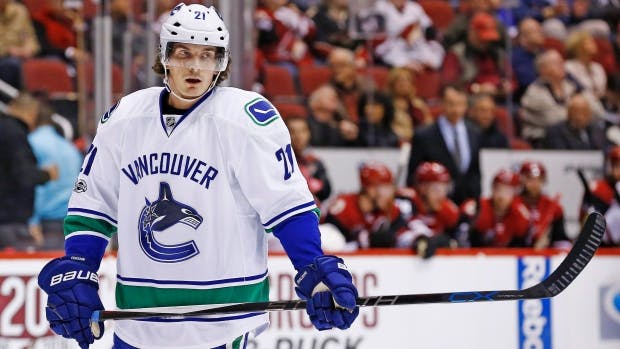
Schaller and Eriksson
Sending Schaller and Eriksson to the minors will reduce the salary cap by $1.075 million each. As per Article 50.5(d)(i)(B)(6) of the NHL CBA, players sent to the minors will see their salary cap hit reduced by the league minimum, which sits at $700,000 this year, plus $375,000. This move will increase the total dead cap space to an astonishing $9.82 mill, a full 12.0%. This still leaves them $3.21 mill over the salary cap.
Gaudette vs Sutter
Ideally Gaudette and Sutter battle it out for the third line centre at training camp. A best-case scenario is one where Sutter comes back healthy and plays well allowing for Gaudette to play in the minors until Sutter is traded at the deadline. Benning and coach Travis Green tend to lean on their veterans so the assumption for now is that Gaudette starts the season in the AHL. This leaves the Canucks $2.29 million over the salary cap and one over roster limit of 24 players. If Gaudette clearly outplays Sutter and Sutter is sent down instead, they will save an additional $158,334.
Antoine Roussell
All indications are that Antoine Roussell will be starting the season on the injured reserve, subtracting his $3 million cap hit and bringing the Canucks back into compliance, but leaving them with no cap room. Benning could still find himself in trouble and need to make a move if Roussell returns to a fully healthy roster.
Sven Baertschi
A potential wild card in this situation is the health status of Sven Baertschi. At the time of the Ferland signing, rumours persisted that Baertschi might be done with the NHL due to his repeated concussion issues. These rumours apparently were shot down by his agent, but Baertschi’s roster spot in the top six seems less certain with the additions of Ferland and Miller. If he does return healthy he could be a potential trade chip for a team in need of secondary scoring. Either scenario would save the Canucks $3.367 million for each of the next two seasons.
Potential Opening Night Roster
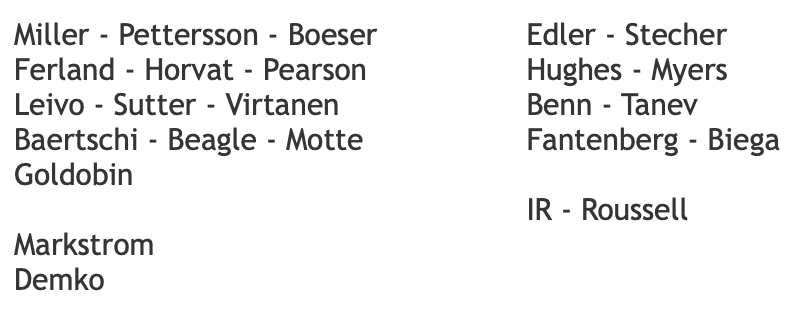
A breakdown of the Canucks’ salary structure is shown below…
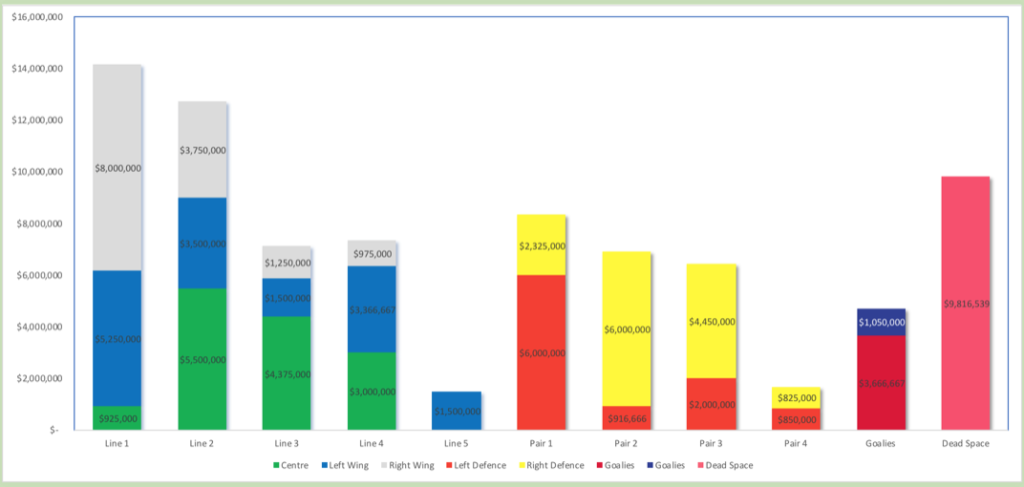
Several things stand out when looking at this chart. The Canucks have a lot of salary in their third and fourth lines, and they are able to do this due to the cheap deal that their first-line centre is on. The defensive pairings look well balanced. The salmon-coloured bar representing the dead cap space on the far right of the chart is the third-largest total.
12% of the Canucks’ salary cap space is taken by players who will no longer be on the team. This isn’t all on Benning, but the majority of it is and his short-term thinking early in his tenure is now coming back to bite him. If the Canucks continue to give up this much money off of the salary cap they will have a hard time becoming contenders.
Performance bonuses should also be a concern. Pettersson maxed out his bonuses last year, adding an additional $2.85 million to his $925,000 salary. Without any salary cap room, the bonus money earned by Pettersson and Hughes will carry into next season which will create even more problems.
It’s possible that the estimates for Boeser and Goldobin are high. Boeser at $6 million and Goldobin at $1.2 million could fit everything in with $8,461 to spare.
It’s going to be fascinating to see how it all plays out at training camp. Finding a way to trade Sutter or Eriksson will essentially resolve any short-term cap issues that the Canucks might have, but without someone willing to take one of those contracts off his hands he has not left himself with a lot of flexibility going forward, and that will be the focus of my second article.

